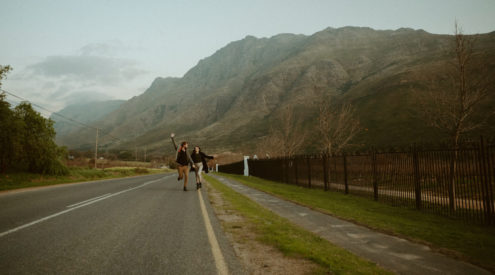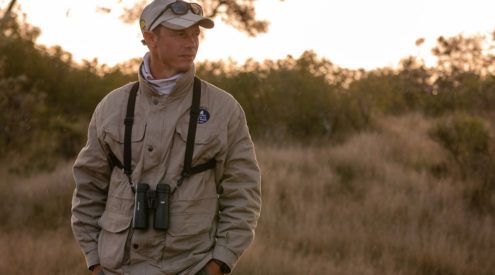Presidents and pilgrims, wine makers and drinkers, wine writers and merchants all come to the Douro Valley to meet Dirk van der Niepoort, and he greets them all equally in his shorts, shirt, and Crocs. And despite being an incredibly famous wine maker – one of the few who, according to a British wine merchant, is asked for autographs – Dirk is a friendly, humble man with a knack for making wines of intensity, balance, power and elegance. A pioneer in making table wine in the Douro Valley – an area famous for its Port production – Dirk is a deeply passionate wine maker and an equally passionate wine drinker.
He was born in 1964 to a Dutch family of Port shippers, Niepoort Vinhos and studied economics in Switzerland before he started making wine in 1987, the first in his family to do so. He now must be one of the world’s most well-known wine makers and continues to experiment making wines in different vineyards, collaborating with other winemakers, always looking to push the envelope and carry on making what he calls ‘wines with extremes’.
The first conversation I had with Dirk was in his car on a drive from Porto to the Douro. I was struck by how intently he listened to me, a wine amateur by all accounts, and though he probably has forgotten more about wine than I’ll ever learn, he asked questions and spoke to me as an equal. What also stood out for me in that car ride was the conviction with which he spoke about wine. Whether it was about picking earlier, using less new oak, or the temperature at which you should serve Port, I always found it almost impossible to disagree.
We arrived at Quinta de Nápoles winery on the Rio Tedo in the Douro Valley where Dirk makes his table wines; it is here that you can see a physical manifestation of Dirk’s character and thought.
Completed in 2007, it was built according to three rules: firstly it had to fit in with the environment, secondly the temperature had to be low, consistent and controlled as naturally as possible, and thirdly you had to be able to drive a forklift anywhere. He achieved all three beautifully.
The curved lines of the exterior mirror the terraces of the Douro, and the building – despite its impressive size – seems to merge into its surroundings: the schist of the building blending into the schist of the soil. It is also environmentally efficient. For example, in the two rooms that are air conditioned (the rest are naturally cool) instead of drawing in the hot, dry air of the Douro Valley and having that be cooled by the conditioners, the air first enters a cavernous room which has been built around a massive piece of rock. Water continually dribbles down the rock face cooling the surrounding air dramatically, and this cooled air is then drawn into and further cooled by the air conditioners, vastly lowering the energy costs. This attention to the environment is also apparent in his wine making philosophy which, he said, is non-interventionist. He uses no enzymes, cultured yeasts or added acid, only sulphur, resulting in wines of freshness, character and wonderful drinkability.
The winery seems like an extension of Dirk. I was there during the middle of harvest and despite the tons of grapes continually arriving and the massive amount of work that had to be done there was always an air of calm about the place. This for me is just like Dirk; he exists with a purposeful quietude despite his manically busy schedule. So busy that when trying to plan a trip with his friend and fellow winemaker Telmo Rodriguez, he could only find time about six months down the line.
At the meals he hosts he doesn’t hold forth from the head of the table dominating conversation, but quietly chats to those around him shifting easily from one language to another. He jokes often. I remember during one meal Dirk announcing, ‘I like Merlot’. Eyebrows rose and heads turned to look quizzically at him, ‘it’s good for my health,’ he continued, pausing for effect, ‘I don’t drink it.’
Behind this affability, charm and gentleness there is a ruthless belief in what wine should be like. Dirk has no time for over-extracted, over-oaked, spoofy wines which he believes most wines today are, and dismisses them outright as ‘shit’. He wants to make wines that are elegant but with forcefulness, wines that are like elephants doing ballet; rich, bold and tannic wines that are in balance. He is currently achieving just that with the 2008 Redoma (the first commercially released Niepoort table wine was the Redoma 1991), a large wild wine which at the same time is tight and structured. It’s full of fruit without a hint of jaminess and majestically balanced; a brilliant wine that will age excellently.
Dirk continually looks for new places to make wines, seeking out areas that will produce the wines he envisions. Apart from his core range of wines there are so many side projects going on I lost count: there is Riesling and Pinot Noir from the Douro, a wine he made with Telmo, another one for a high profile Spanish magazine, another from Ribeira Sacra, and while I was there he was planning even more. There will always be another bottle to drink, just as there are always different vineyards able to produce new and exciting wines, and Dirk works tirelessly finding both.
In an interview he was asked how he would describe himself. His response was, ‘stubborn and naive,’ which might be perhaps as good a description of the man as you will find. Belligerently sure of himself and his wines, but open enough to know that there is always more to learn.
This article was first written for G&W Magazine
















